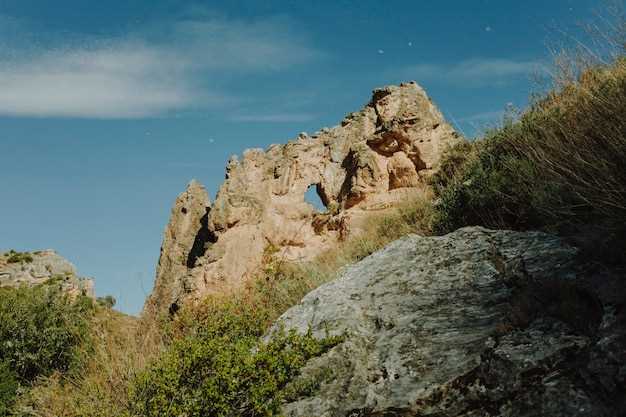The Story Behind the Pinnacles
In an ever-intriguing landscape, certain rock formations captivate wanderers who seek marvels sculpted by nature’s hand. Shaped by millennia, these towering structures represent geological masterpieces that hold within them countless tales of natural processes and human encounters.
Delving into the bygone eras reveals secrets etched into stone, showcasing evolution and transformations that challenge perception and ignite curiosity. With each layer of sediment and crevice, there’s a hint of ancient phenomena waiting to be uncovered and understood.
Embarking on this exploration, enthusiasts and adventurers alike discover a profound connection to our planet’s history. These awe-inspiring formations stand as silent witnesses to the passage of time, offering invaluable insights into Earth’s dynamic past. Prepare to embark on a journey through time, where every peak and valley lends a voice to our collective history.
The Historical Origins of The Pinnacles

Understanding the beginnings of this natural wonder involves delving into a rich tapestry of environmental processes and ancient landscapes. This portion provides insight into how these striking formations came into existence, shaped by a combination of geological events and atmospheric conditions over millennia.
First, it is believed that these formations were influenced by sedimentation and erosion patterns dating back millions of years. Initially, marine organisms contributed to the accumulation of calcium-rich deposits, which eventually solidified into limestone structures.
Over extensive periods, environmental changes such as shifting coastlines, fluctuating sea levels, and varying weather patterns played a pivotal role in the evolutionary journey of these formations. Over time, wind and rain carved and shaped these deposits into the magnificent pillars that stand today.
Human History surrounding these natural wonders is equally intriguing. Indigenous cultures have long held spiritual and cultural connections to these formations, weaving them into their folklore and traditions. Early explorers and settlers brought forward their own interpretations and stories, further enriching the historical narrative.
Ongoing research continues to unearth details about these geologic anomalies, offering broader perspectives and deeper understanding of their origin. Paleontologists, geologists, and archaeologists collaborate tirelessly, uncovering evidence that sheds light on various aspects of these ancient landscapes.
The journey into the past of these geological marvels underscores the intricate interplay between nature’s forces and time’s passage, crafting a story written in stone.
How Nature Sculpted The Pinnacles
The awe-inspiring landscape features towering limestone formations that burst forth from desert sands. These natural wonders weren’t created overnight but are the result of intricate processes spanning millions of years. What can be assumed as still life in a barren region is actually a living testament to Earth’s dynamic forces.
Long-term Erosion

Erosion plays a pivotal role in the creation of these majestic stone columns. Over time, wind and water gradually wear down softer rock layers, revealing durable limestone structures hidden beneath. Seasonal rainfalls and relentless winds chip away at the surface, molding the unique shapes we see today.
Ancient Marine Life

In ancient epochs, this arid area was submerged under oceans rich in marine life. As these beings perished, their remains settled on the seafloor, compacting into dense limestone over eons. Geological shifts eventually raised these sediments above sea level, setting the stage for their current spectacle. The intricate process showcases nature’s unwavering patience and artistry.
The Pinnacles as a Tourist Attraction
An extraordinary natural wonder, these ancient formations have captivated visitors from around the world. With their intriguing shapes and mysterious origins, they offer a unique experience that combines breathtaking scenery with a sense of adventure. This section delves into the aspects that make this site a must-visit for travelers, including the best activities, optimal visiting times, and practical tips for an unforgettable trip.
Activities for Visitors
- Scenic Walks: Well-marked trails provide easy access to explore the area on foot, allowing for close interaction with the mystical structures.
- Photography: With dramatic lighting and striking contrasts, this destination is a paradise for photographers, offering countless opportunities for stunning shots.
- Wildlife Watching: The diverse ecosystem supports various species of birds and other wildlife, enhancing the natural beauty of the environment.
- 4WD Tours: For the more adventurous, guided four-wheel drive tours offer a different perspective, taking visitors through some of the less accessible parts of the site.
Best Times to Visit
Timing your visit can greatly enhance the experience. The cooler months provide a more comfortable climate for exploration. Additionally, mornings and late afternoons are perfect for capturing the dramatic play of light and shadow across these magnificent structures.
- Spring: Blooming wildflowers add a splash of color against the golden sands, making it one of the most picturesque times to explore.
- Autumn: With mild temperatures and fewer crowds, autumn offers a serene atmosphere ideal for peaceful exploration.
Whether visiting for a day or planning a longer stay, ample accommodation options are available nearby, from cozy lodges to convenient camping sites. Ensure to carry sufficient water and sun protection. By appreciating the natural marvels while respecting the environment, everyone can enjoy a memorable and inspiring journey.

